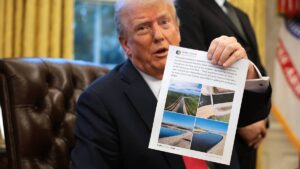Ground Breakers: Miners ask for more from critical minerals strategy, Rio ramps up US copper and Aussie greenfields

Will our miners slip back in the pack under the new Critical Minerals Strategy? Pic: PeskyMonkey/iStock via Getty Images
- Miners say quicker more concrete tax incentives and financial schemes are needed to encourage downstream investment in critical minerals
- Framework is there, but initiatives pale compared to incentives on offer in US, Canada and Mexico, miners say
- Rio to pump millions into US copper expansion
Major mining names have called for faster action on real world support to develop Australia’s critical minerals industry after a lukewarm reaction to the Albanese Government’s seven-year plan.
Described by the Association of Mining and Exploration Companies as an “enduring framework” for the resources sector as electric vehicle feeding commodities like lithium, nickel and cobalt emerge as major cogs in the response to the energy transition, other stakeholders have been far less kind.
If you need to see the bones of the strategy check out the document here.
Or Cheddars’ assessment of the bloviation here.
The Feds estimate in the package there are 81 critical minerals projects in the pipeline worth between $30-42 billion between them.
By contrast the only new funding on the table is a $500m chunk of the North Australia Infrastructure Facility, an Aussie loan system which has a chequered past when it comes to picking winners and losers to back in the resources game (Salt Lake Potash anyone?).
Madeleine King, the Federal Resources Minister for those playing at home, insists it’s not possible for Canberra to compete with the US$370 billion in tax breaks and incentives on offer through Biden’s Inflation Reduction Act in the States.
“So, yeah, there is obviously more for the government to do. I don’t shy away from that. But it’s important we have a strategy that guides us in what we spend so it’s responsible spending; it’s not the sort of – well, it’s not a shopping list,” she said.
“You know, we don’t want to just pick favourites; we want to make sure we follow this through so that the spending is wise. Because we can’t compete with the amount of capital the US has put into this industry through the Inflation Reduction Act.”
Falling behind?
The lack of commitments for the here and now have unsurprisingly disappointed those who think Government commitments will be central to bringing downstream processing of critical minerals onshore.
“This missed opportunity will keep Australia handicapped in the global race to capture more value from our battery minerals,” MinRes (ASX:MIN) MD Chris Ellison said.
“Real action like tax incentives, fast-tracked approvals and financial assistance are urgently required if the government is serious about competing in a post-Inflation Reduction Act world.”
One of the world’s biggest spodumene producers, MinRes is spending around $1 billion to take stakes with partner Albemarle in two processing plants in China — sovereign risk be damned — before it builds lithium processing capacity in Australia because the immediate payback is too good to ignore.
Avenira (ASX:AEV) chairman and CEO Brett Clark, whose company will need at least $180 million to develop the first 10,000tpa stage of Australia’s first LFP cathode manufacturing plant in the Northern Territory alongside a DSO phosphate mine, said the addition to the NAIF funding pool was welcome.
Eventually planning to develop three trains costing $537 million, Avenira would be eligible for funding for the Darwin-based processing plant.
But he said the commitment “looks insignificant” when compared to the pools of cash announced by the US under the IRA.
“The Federal Govt is clearly messaging that the Australian critical minerals industry needs to move forward without meaningful assistance compared to the quantity on offer overseas,” he told Stockhead.
“This leaves the Australian critical minerals industry at a disadvantage compared to Canada, the USA and Mexico with respect to attracting downstream investment.”
WA’s union for mining giants, the CME, says further funding or tax incentives are needed to shift the dial amid competition from other markets.
For example, Element25 (ASX:E25) is planning to locate a battery manganese plant now in the USA near the factories of its future offtake partner, carmaker Stellantis, rather than near its Butcherbird mine in the Pilbara.
Other companies have called for the urgent inclusion of certain electric vehicle metals commonly mined in Australia on the 26 strong critical minerals list.
Wyloo Metals, the private mining arm of Andrew Forrest’s business empire, wants nickel on there pronto. Fresh off its purchase of Mincor Resources, it is planning to develop a nickel sulphate plant and potential precursor facility with IGO (ASX:IGO) in Kwinana.
“Between now and 2040, the demand for battery-grade nickel will increase by over 300 per cent, while supply is only forecast to grow by 22 per cent,” the company said in a LinkedIn post.
“With some of the world’s highest quality nickel resources, which can be produced more sustainably than in other jurisdictions, we cannot afford to miss the opportunity to become a major global supplier of nickel to the rapidly growing electric vehicle market.
“We encourage the government to include nickel on its list of critical minerals now, rather than waiting for a review in 2026.”
Rio ramps up copper business
Another of those much discussed minerals not always listed as critical is copper.
Rio Tinto (ASX:RIO) has already showed its hand there, securing a deal with the Mongolian Government to expand the Oyu Tolgoi mine to 500,000tpa from 2028-2036 and paying US$3.3 billion for a third of the asset by buying out minority shareholders in Turquoise Hill Mining.
Now it is embarking on a US$498 million project to development an underground mine at North Rim Skarn in Utah, which will begin production next year and ramp up by 2026.
The mine, which has an indicated resource of 10.8Mt at 2.93% copper, 1.2g/t gold, 65.97g/t silvr and 0.008% molybdenum and inferred resource of 7.7Mt at 3.13% copper, 0.96g/t Au, 18.41g/t Ag and 0.005% Mo, is expected to deliver 250,000t of copper over 10 years.
NRS has a probable ore reserve of 3Mt at 2.39% copper, 1.77g/t gold, 18.59g/t silver, and 0.010% molybdenum.
It comes alongside the US$55m to be spent on underground mining at the Lower Commercial Skarn, where an additional 30,000t will be mined to 2027 and the US$300m being spent on the largest rebuild in the Kennecott Smelter’s history, which began in May.
Another US$120m will be spent on upgrades to the refinery tank house and molybdenum circuit there, with Rio also using the new developments to support the rollout of battery EVs across its underground operations at Kennecott, while open pit mining could now be extended beyond a 2032 end date.
““We are investing to build a world class underground mine at Kennecott and strengthen our processing facilities, to meet the growing demand for copper in the United States, a key material for domestic manufacturing and the energy transition,” Rio copper COO Clayton Walker said.
“This investment will position Kennecott to continue the strong contribution it has made as part of the Salt Lake Valley community for 120 years, injecting about $1.5 billion annually to the local Utah economy.”
The materials sector fell 0.83% this morning, hammered by lower iron ore and gold prices.
Ground Breakers share prices today:
Related Topics

UNLOCK INSIGHTS
Discover the untold stories of emerging ASX stocks.
Daily news and expert analysis, it's free to subscribe.
By proceeding, you confirm you understand that we handle personal information in accordance with our Privacy Policy.








